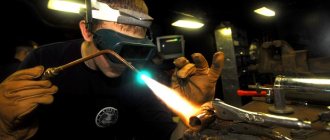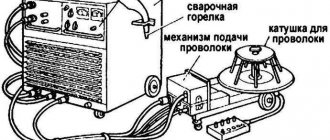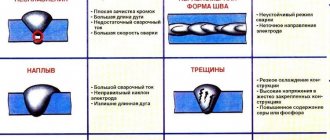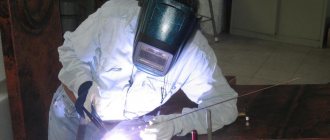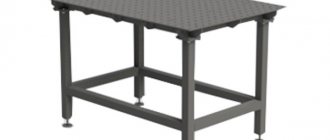General requirements
The safety instructions for a welder suggest that the work should be carried out by a specialist who has a special education and has reached the age of majority. Also, the employee must undergo a medical examination, introductory and initial training, confirm his knowledge of labor protection, etc. The standard welder safety instructions present the following number of responsibilities of a specialist:
- An employee can only carry out those types of operations that are determined by the work instructions;
- Comply with the rules related to internal regulations;
- When working, use collective and individual protective equipment;
- Follow labor safety rules exactly;
- If a situation occurs that threatens the life and health of people, then immediately notify senior management (this also applies to accidents that have already occurred);
- Study safe types and methods of metal welding, work techniques and first aid;
- Undergo mandatory medical examinations provided for by the Labor Code;
- Know the points contained in the welder’s fire safety instructions, and also be able to use fire extinguishing agents.
It is also worth understanding that during work there may be dangers that are dangerous to human life and health, of the following kind:
- During welding, harmful substances are released that enter the human skin and respiratory system;
- The workplace should be located at a relative elevation from the ground or floor;
- Increased voltage may occur in the network, which will lead to a circuit closing through the human body;
- Although safety precautions at the welder’s workplace involve protective equipment, not all of them can protect against infrared and ultraviolet radiation;
- Molten drops of metal can fall on parts of the body;
- Faulty equipment such as a welding transformer or gas cylinders can pose a great danger;
- High brightness of light;
- There may be sharp burrs, roughness and other dangerous things on the surface;
- The air is usually polluted and dusty, and also contains toxic metal fumes.
The labor safety instructions for a welder assume that the worker must be provided with, and must also use, special clothing, footwear, protective equipment and other things that are necessary for standard industry standards. The issuance of workwear must be provided free of charge by the employer. If work is taking place on a construction site, a helmet must be present. The manual welder's occupational safety instructions prohibit the use of faulty devices. All equipment must be used exclusively for its intended purpose.
Labor protection instructions for electric welders
1. General safety requirements
1.1. Persons who have passed the following qualifications are allowed to work independently on the equipment:
- induction training;
- fire safety instruction;
- initial training at the workplace;
- training in safe methods and techniques of work for at least a 10-hour program (for work that has increased safety requirements - a 20-hour program);
- Instruction on electrical safety in the workplace and testing of mastery of its content.
1.2. Persons who have reached the age of 18, have undergone a medical examination, have completed special training with additional testing of knowledge on labor protection rules, have received a certificate for the right to work as an electric welder, have been certified in the manner established by the “Rules for the Certification of Welders” approved Gosgortekhnadzor.
1.3. An electric welder must undergo:
- repeated instructions on occupational safety in the workplace at least every three months;
- unscheduled briefing: when changing the technological process or labor safety rules, replacing or upgrading production equipment, fixtures and tools, changing working conditions and organization, violating labor safety instructions, breaks in work for more than 60 calendar days (for work to who are subject to increased security requirements - 30 calendar days);
- dispensary medical examination - in accordance with the order of the Ministry of Health of the Russian Federation No. 90 dated March 14, 1996.
1.4. The electric welder is obliged:
- comply with the internal labor regulations established at the enterprise;
- comply with the requirements of this instruction, instructions on fire safety measures, instructions on electrical safety;
- comply with the requirements for equipment operation;
- Use the personal protective equipment provided for its intended purpose and take care of it.
1.5. The electric welder must:
- be able to provide first (pre-medical) aid to a victim in an accident;
- know the location of first aid facilities, primary fire extinguishing equipment, main and emergency exits, evacuation routes in the event of an accident or fire;
- perform only the assigned work and do not transfer it to others without the permission of the foreman or workshop manager;
- while working, be attentive, do not be distracted or distract others, do not allow persons unrelated to work to enter the workplace;
- keep the workplace clean and tidy.
1.6. An electric welder must know and observe the rules of personal hygiene. Eat, smoke, and rest only in specially designated rooms and places. Drink water only from specially designed installations.
1.7. If you find malfunctions of equipment, devices, tools or other shortcomings or dangers in the workplace, immediately inform the foreman or workshop manager. You can begin work only with their permission after eliminating all deficiencies.
1.8. If a fire is detected or in the event of a fire:
- turn off the equipment;
- inform the fire department and administration;
- begin to extinguish the fire using the primary fire extinguishing means available in the workshop in accordance with the fire safety instructions.
If there is a threat to life, leave the premises.
1.9. In the event of an accident, provide the victim with first (pre-medical) aid, immediately report the incident to the foreman or workshop manager, take measures to preserve the situation of the incident (condition of the equipment), if this does not create a danger to others.
1.10. For failure to comply with the safety requirements set out in these instructions, the electric welder is liable in accordance with current legislation.
1.11. Workers who have undergone an additional medical examination and special training in steeplejack methods are allowed to weld at height.
1.12. When performing work, an electric welder must have a certificate with him. At least once every 12 months, the “Rules for Certification of Welders” provide for testing knowledge and practical skills, about which a corresponding note is made on the certificate. An expired certificate is invalid. Welders may only be allowed to perform welding work of the types specified in their certificate.
1.13. Connecting and disconnecting the electric welding installation from the power source and monitoring its good condition during operation are carried out only by trained electricians.
1.14. Electric welders working in confined spaces or welding non-ferrous metals must undergo an annual medical examination with mandatory chest x-rays and relevant laboratory tests.
1.15. The main harmful and dangerous production factors accompanying the welding and cutting processes, which under certain circumstances can cause injuries and occupational diseases:
- increased voltage of the electrical circuit,
- increased light brightness and levels of ultraviolet and infrared radiation,
- increased content of welding dust in the breathing zone and in the working area,
- sparks, splashes and emissions of molten metal and slag,
- location of the workplace at a significant height relative to the ground surface,
- static and dynamic overloads of the body.
1.16. According to the “Standard Industry Standards for the free issuance of workwear, safety footwear and other personal protective equipment to workers and employees,” an electric welder is entitled to: a canvas suit (wearing period 12 months), leather boots (wearing period 12 months), canvas mittens (wearing period 1 month), gloves dielectric (duty), protective helmet (duty). For outdoor work in winter, additionally: a cotton jacket with an insulating lining (wearing period 30 months), cotton trousers with an insulating lining (wearing period 30 months), felt boots (wearing period 36 months).
1.17. Electric welding work must be carried out only in special clothing, with a safety shield or a mask with special protective glasses that comply with welding conditions and GOST. The worker assisting the welder must wear safety glasses with dark lenses.
2. Safety requirements before starting work
2.1. Inspect overalls, safety shoes and personal protective equipment. If you find faults with the protective equipment, contact a technician to replace them. Make sure clothing is clean and not contaminated with oil or other flammable substances. Put on overalls and safety shoes, fasten all the buttons, tie all the ribbons, lace up your shoes, and tuck your hair under your headdress. The jacket and trousers must be worn untucked, the pockets closed with flaps.
2.2. Choose a safety shield or helmet that matches the current strength when welding.
2.3. Check your work area to make sure it is sufficiently lit and uncluttered. Remove unnecessary parts and workpieces, cover the wooden floor and flammable objects with asbestos sheets or other fire-resistant materials. Remove flammable and flammable materials at a distance of at least 10 m. Make sure that fire-fighting equipment is available at the workplace (in accordance with fire safety regulations).
2.4. Prepare portable shields to protect others from the harmful effects of electric arc light.
2.5. Install a wooden stool or bench if the work has to be done while sitting. If you have to work inside metal containers, then lay a rubber mat under your feet, placing technical felt under it. Place a dry board or a board covered with a rubber mat under your feet if the work is to be done in a damp place.
2.6. Check the presence and serviceability of local suction and portable ventilation units that ensure the removal of contaminated air and the supply of clean air if welding will be carried out in a closed room or container.
2.7. Inspect the welding unit. Check the reliability of fastening of the grounding wire of the housing and the secondary winding of the transformer, the presence of a shield covering the contacts on the high voltage side, and the integrity of the wire insulation.
2.8. Check the presence of a return wire (wire to the part being welded), the serviceability of its insulation and grounding, as well as the serviceability of the clamps for reliable connection to the part being welded.
2.9. Check the integrity of the insulation of the electrode holder handle, make sure that it firmly holds the electrode, allows for quick change of electrodes without touching live parts, and ensures reliable contact between the electrode and the holder.
2.10. Check whether the measuring instruments give readings indicating the presence or absence of voltage in the welding circuit. Make sure that the transformer locking devices are in good working order, ensuring automatic shutdown in the event of an arc failure.
2.11. If work is to be done in driveways and passages, hang the wires to a height of at least 2.5 m or lay them in special trenches to prevent mechanical damage. If this requirement cannot be met, then driveways and passages must be closed during welding work.
2.12. Make sure that the scaffolding or scaffolding is reliable if the work is at height, and that the safety belt is in good working order.
2.13. Report any defects you notice to the technician and do not begin work until they are eliminated.
3. Safety requirements during operation
3.1. Welding work in the boiler room is carried out only with written permission from the person responsible for fire safety, which must be in hand before completion of the work.
3.2. Protect the workplace with portable shields that protect surrounding workers from the effects of ultraviolet rays of the electric arc. Shields enclosing the welding station should be installed on 3 sides and, above all, on the side of the main passages.
3.3. The materials to be welded and workpieces in places to be welded must be thoroughly cleaned to prevent splashing of molten metal.
3.4. When cleaning the welding seam from splashes and slag, wear safety glasses with ordinary glass. Cleaning should be done using brushes or scrapers with a durable and comfortable handle.
3.5. Make sure that your hands, clothing and shoes are always dry to avoid electrical injury.
3.6. Warn nearby people about the start of welding by shouting “Close up!”
3.7. Ensure that the grounding device is securely fastened during operation until the installation is completely disconnected from the network.
3.8. Welding of tanks, cisterns and other containers containing flammable substances is carried out only in accordance with the work permit. Make sure containers are washed and dried. Start welding by opening all the holes in the vessel. Before descending into the hatch, check that the hatch cover is securely fastened in the open position.
3.9. Work inside the tank can only be done if there is an observer outside the tank. The observer must be able to immediately turn off the welding network and must be able to see and hear the welder. The welder must be equipped with a belt with a rope, the end of which, at least 2 m long, must be in the hands of the observer. Portable lighting during these works should have a voltage no higher than 12 volts; electrodes should be changed with the voltage turned off.
3.10. Welding work inside containers (reservoirs, boilers, cisterns, etc.) should only be carried out if the required air exchange is ensured using special ventilation devices.
3.11. When welding inside boilers, tanks, etc., in addition to overalls and dielectric mats, use special helmets made of dielectric material.
3.12. Welding work on the repair of pipelines, vessels and tanks operating under pressure should be carried out only after making sure that there is a complete absence of pressure in them according to the pressure gauge.
3.13. Electrical welding work in wells and deep ditches must be carried out only with a work permit and after making sure, using a gas analyzer, that there are no accumulations of flammable gases or carbon dioxide in them. These works are allowed to be carried out at temperatures not exceeding 50 degrees C.
3.14. Whenever moving welding wires, make sure that the wires do not come into contact with water, oil, steel ropes, hoses and pipelines containing flammable gases and oxygen, as well as hot pipelines.
3.15. During long breaks in work, the welding power source should be turned off.
3.16. When working at a height of 1.5 m or more from the ground surface, electric welders should use safety belts, with which they must be secured to fixed and durable structural elements.
3.17. Places where work is being done at height must be fenced, in addition, posters should be posted at these places: “Don’t walk - they are working at the top!”
3.18. Work at height only from scaffolding and scaffolding, which must be solid, with strong and stable fences. As an exception, it is allowed to perform short-term work from ladders with stops in the form of metal spikes (for wooden floors), rubber tips (for smooth floors) and other devices. The upper ends of the ladders should be secured to strong, stationary structures, and measures should be taken to prevent accidental displacement of the ladders by passing people and moving loads.
3.19. Do not leave loose objects on the scaffolding or throw them down.
3.20. Repair welding equipment only after disconnecting the voltage.
3.21. Place the energized electrode holder on a special stand or suspension, do not throw it away or leave it unattended.
3.22. Make sure that all handwheels, switch handles, buttons, handles that the welder touches during the welding process are made of dielectric material.
3.23. During rain, welding outdoors can only be done with appropriate protective devices (canopies, canopies, etc.).
3.24. When working in close proximity to hatches, protect them. If guards or covers were removed during work, they must be replaced after work is completed.
3.25. To carry tools, electrodes and other welding materials, use special tool boxes or cylindrical cases made of fireproof material.
4. Safety requirements in emergency situations
4.1. At the slightest sensation of electric current, stop work, turn off the voltage and inform the technician.
4.2. In case of fire, take measures to extinguish. Fired electrical wires should be extinguished with sand and carbon dioxide or dry fire extinguishers, which should be located at the workplace. Notify the foreman about the fire. If there is a threat to life, leave the premises.
4.3. If there is an accidental supply of hot or cold water during the repair of boilers and pipelines, immediately stop work, turn off the welding machine and report to the foreman or workshop manager.
5. Safety requirements after completion of work
5.1. Turn off the electric welding machine. Collect the welding wires and put them in the designated place.
5.2. Carefully check the work area, do not leave open flames, objects heated to high temperatures, as well as smoldering combustible materials, debris, etc. Provide observation for 3-5 hours.
5.3. Collect the electrode cinders in a special fireproof box.
5.4. Place the tool in a specially designated place.
5.5. Take off your overalls, put them in order and put them in the closet. Wash your face and hands thoroughly. If possible, take a shower.
5.6. Report any defects you notice to the technician.
Safety rules before starting work
- Check the availability and functionality of protective equipment;
- Prepare the place for the procedures and free it from unnecessary objects that will interfere;
- Pay attention to the condition of the floor so that it is not damp or wet;
- Check the serviceability of working tools, welding machines, gas equipment and other things;
- Prepare water and other means for cooling instruments;
- Take care of fire safety using such means as sand, fire extinguisher, etc.;
- Make sure that there are no objects in the immediate radius that are easily flammable;
- Gas cylinders must be transported only on a special trolley, and they themselves must be kept at a sufficiently large and safe distance from open flames;
- The equipment must not be used if it is faulty and must be replaced;
- You should receive an assignment to complete the work presented;
- Check the welding wires for correct connection, as they should not be twisted.
Safety rules during work
The occupational safety instructions for a semi-automatic welder require the following actions during welding procedures:
- There should be no flammable objects within a radius of 5 meters from the welder;
- When working outdoors, if there is a chance of rain or snow, a canopy should be made over the workplace;
- When working at low heights, platforms or scaffolding must be present, since it is strictly forbidden to weld from attached structures;
- It is prohibited to use grounding connections, parts of sanitary networks and various technological equipment as a return wire that is connected to the workpiece;
- Welding wires must be applied so that they do not harm the remaining parts of the parts and mechanisms being welded;
- If the work is carried out by several welders, then their places should be separated from each other by light-proof screens.
Review of changes to the new rules for electrical and gas welding work
So, in this article we will try to make a short overview of the new labor protection rules.
The requirements for the ventilation system have been updated; now the work area should be equipped with exhaust systems when the level of harmful substances exceeds the maximum permissible concentrations in the working air.
In case of performing work with increased danger, the employer, as before, will need to issue a work permit. The procedure for carrying out high-risk work, issuing a permit and the duties of officials responsible for the organization and safe performance of work is established by the local regulatory act of the organization.
Information about issued permit orders is recorded in a journal, and it is possible to keep the journal in electronic form using an electronic signature or any method that allows identifying employees and officials.
According to paragraph 33 of the new rules, if a number of conditions are met, work from ladders and stepladders is now allowed:
| It became | Was |
| clause 33 Carrying out electric welding and gas welding work from ladders and stepladders is permitted provided that the welder uses a five-point safety harness and a safety cord attached to a safety rope or anchor bolt, above the level of the welder’s head, and also if there is a safety worker who supports the ladder or stepladder below. | clause 37 It is not allowed to carry out electric welding and gas welding work from ladders and stepladders, as well as simultaneous electric welding and gas welding work inside containers. |
It is worth noting that the section “Occupational safety requirements for storage and transportation of raw materials, blanks, semi-finished products, finished products and production waste” does not include requirements for the storage of calcium carbide.
In the new rules we did not find requirements for employees, training, internships, we believe these requirements will be approved in the future by a separate document.
Having studied the requirements of the new rules on labor protection when performing electric and gas welding work, we came to the conclusion that they allow for a more flexible approach to ensuring safety.
In these conditions, in order to ensure safe work, the employer will need to independently determine and consolidate the requirements for performing electric welding and gas welding work; this can be established based on the results of an occupational risk assessment.
